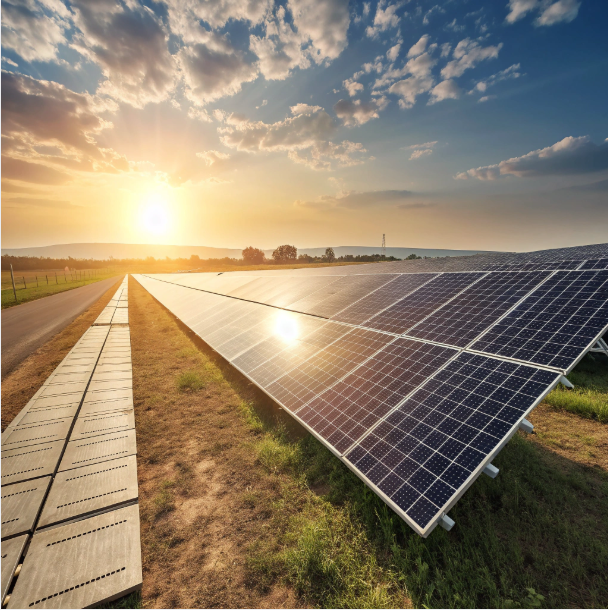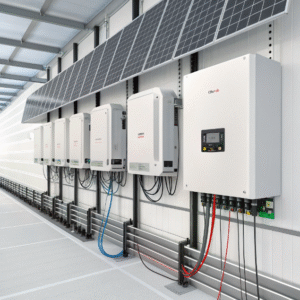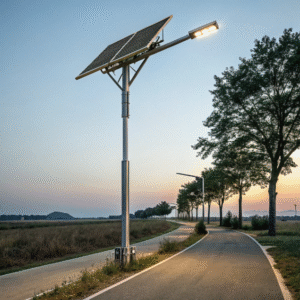The Efficiency Trap: Why Your Competitors Are Winning Bids with “Lower” Spec Panels (And How They Do It)

Watching competitors win projects with seemingly inferior panels? You're not losing on price—you're losing on real-world performance1 math.
Competitors win bids by calculating actual energy yield, not just panel efficiency. They optimize for real-world conditions like temperature and degradation, achieving lower lifetime costs despite "lower" specs.
The solar industry's obsession with peak efficiency hides a critical truth: the cheapest panel isn't the one with the lowest price tag. Let's uncover how smart buyers are gaming the system.
The "Datasheet Lie": That "21% Efficiency" Panel is Actually 18% on a Hot Day. Here's the Math Your Supplier Hopes You Ignore.
Ever see your panel performance plummet during summer peaks? That's not bad luck—it's physics your supplier downplays.
Panel efficiency drops 0.3-0.5% per degree Celsius above 25°C. A "21%" panel at 65°C cell temperature delivers only ~18% efficiency, while temperature-resistant panels2 maintain higher real-world output.
Understanding Temperature Coefficients
The key lies in the temperature coefficient3—a spec many buyers overlook. I've seen projects where "premium" panels underperformed budget options because nobody checked how they handled heat. The coefficient tells you how much power you lose for every degree above standard test conditions.
| Panel Type | Temperature Coefficient (%/°C) | Efficiency at 65°C (from 21% STC) |
|---|---|---|
| Standard Mono PERC | -0.35% to -0.40% | 17.8% to 18.2% |
| N-Type TOPCon | -0.29% to -0.32% | 18.4% to 18.7% |
| HJT | -0.24% to -0.27% | 19.0% to 19.3% |
The Bid-Winning Calculation
Smart competitors calculate energy yield4 using local temperature data, not lab conditions. In Arizona, a panel with better temperature coefficient can outperform a "higher efficiency" panel by 5-8% annually. That's the margin that wins bids—actual kWh per dollar, not watts per panel.
Panels with better temperature coefficients outperform in hot climates. True Superior temperature coefficients maintain higher output in real-world conditions, increasing energy yield.
Peak efficiency is the most important panel specification. False Real-world performance depends on temperature response, degradation, and low-light behavior—not just peak efficiency.
The Factory "Showroom" vs. The Real Production Line: An Insider's Guide to Vetting Your Panel Supplier (Before It's Too Late)
Visiting a supplier's showcase production line? That's their theater—the real quality happens on lines you don't see.
Vet suppliers by auditing multiple production lines, checking consistency across batches, and verifying independent quality certifications. The "showroom" line often has superior equipment and staffing not representative of main production.
Beyond the Factory Tour Theater
I've toured factories where Line 1 had robotic precision while Lines 4-7 used manual labor with higher defect rates. Suppliers showcase their best—your due diligence must uncover their average. Demand to see quality control data from all active production lines, not just the demonstration line.
Critical Audit Points
Third-party certifications like PVEL's Module Quality Scorecard reveal what factory tours hide. Check these key indicators:
- EL testing consistency across production batches
- Color uniformity in mass production (not just sample panels)
- Raw material sourcing consistency throughout the year
- Worker turnover rates on standard production lines
High turnover often indicates training gaps that affect quality. One supplier I worked with had 40% monthly turnover on their main lines—explaining why their field failure rate was triple their claims.
Factory audits should include multiple production lines. True Auditing only showcase lines misses quality inconsistencies in mass production.
All production lines in a factory have identical quality standards. False Factories often maintain showcase lines with superior equipment and staffing.
PID, Micro-cracks, and Snail Trails: A 10-Year Post-Mortem on Dead Solar Panels (And How to Avoid Them)
Seeing panels fail years early? The warning signs were there at installation—if you knew where to look.
Prevent premature failure by specifying PID-resistant cells, proper installation techniques, and rigorous pre-deployment EL testing. Most field failures stem from issues detectable before commissioning.
The Failure Timeline
From my decade of failure analysis, patterns emerge: micro-cracks5 from handling cause year-3 failures; PID kills systems in years 5-7; snail trails appear years before catastrophic failure. The cheapest bid often uses panels without proper PID resistance6 or rigorous factory testing.
Prevention Strategy Framework
| Failure Mode | Early Detection Method | Prevention Specification |
|---|---|---|
| Micro-cracks | Pre-installation EL testing | Maximum allowable crack length: <5% of cell area |
| PID | Potential-induced degradation testing at 85°C/85% RH | PID resistance: <5% power loss after 96h testing |
| Snail Trails | UV fluorescence testing | Silver paste quality certification |
The Real Cost Calculation
I've replaced more "bargain" systems than premium ones. The math is simple: a 10% cheaper panel that fails in 12 years costs 40% more per kWh than a reliable 25-year panel. Smart bidders calculate lifetime cost, not initial price.
EL testing can detect micro-cracks before installation. True Electroluminescence imaging reveals cell cracks invisible to the naked eye, preventing future failures.
All modern panels are equally resistant to PID. False PID resistance varies significantly by cell technology and manufacturing quality.
Conclusion
Winning bids requires calculating real energy yield, not comparing datasheet specs. Focus on lifetime performance, not initial cost.
Explore the factors that influence solar panel performance beyond lab conditions. ↩
Discover the benefits of temperature-resistant panels for better performance in hot climates. ↩
Learn how temperature coefficients affect solar panel performance and efficiency in real-world conditions. ↩
Understanding energy yield is crucial for making informed decisions about solar panel investments. ↩
Learn about the impact of micro-cracks on solar panel efficiency and how to detect them. ↩
Understanding PID resistance can help you choose panels that last longer and perform better. ↩



